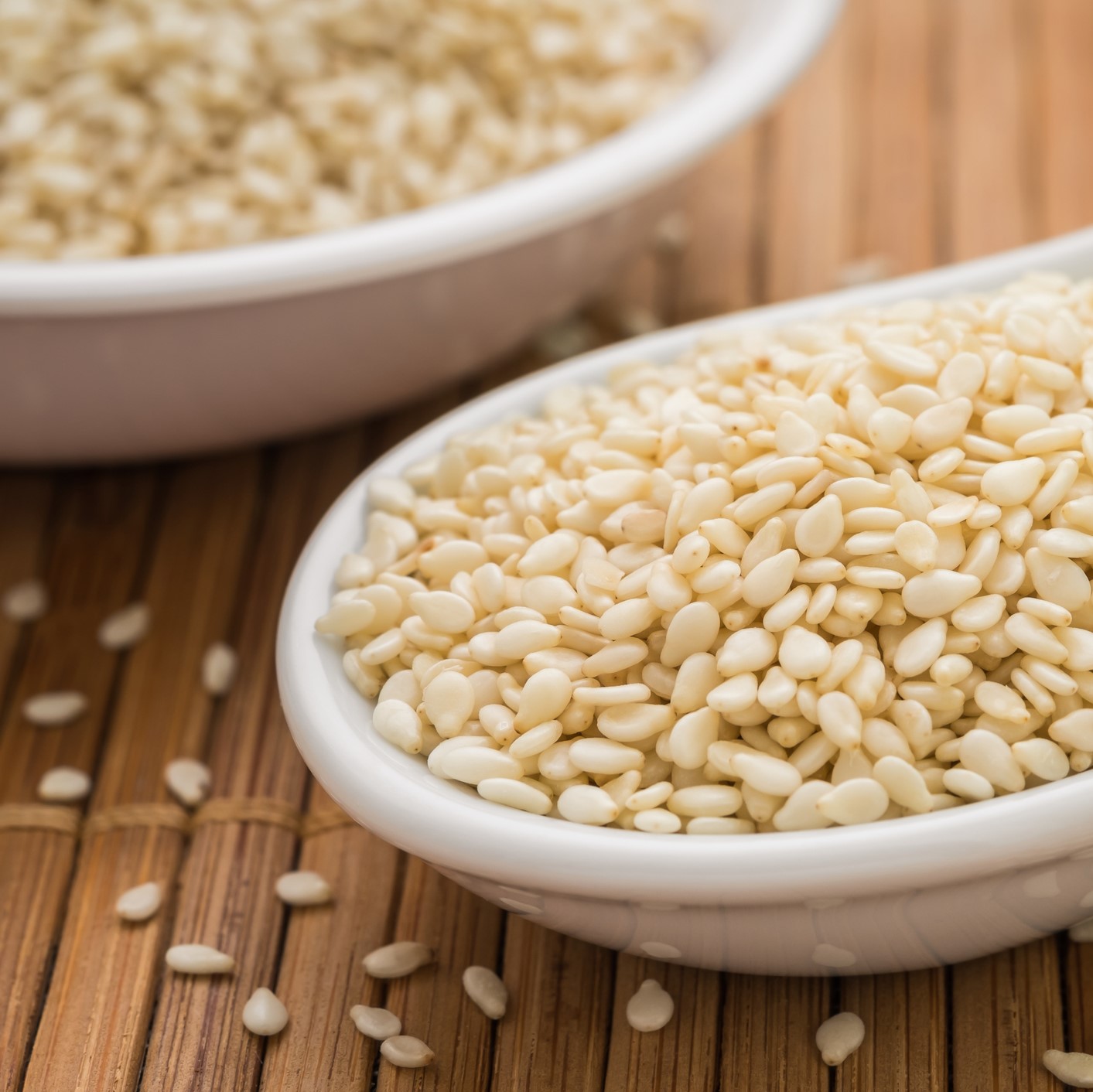- Sesame is considered a priority allergen by Health Canada. Priority allergens are the foods that cause the majority of allergic reactions.
- Sesame is a flowering plant that produces edible seeds.
- Sesame seeds can be creamy white or charcoal black in colour.
- Sesame oil is dark in colour and is commonly used in Asian dishes.
Allergic reactions to sesame
An allergic reaction usually happens within minutes after being exposed to an allergen (e.g., sesame), but sometimes it can take place several hours after exposure. Anaphylaxis is the most serious type of allergic reaction.
Symptoms of anaphylaxis generally include two or more of the following body systems:
If you have a sesame allergy, keep an epinephrine auto-injector (e.g., EpiPen®, ALLERJECT®) with you at all times. Epinephrine is the first-line treatment for severe allergic reactions (anaphylaxis).
Be allergy-aware: How to avoid sesame
- Read ingredient labels every time you buy or eat a product. If the label indicates that a product “Contains” or “may contain” sesame, do not eat it. If you do not recognize an ingredient, if there is no ingredient list available, or if you don’t understand the language written on the packaging, avoid the product.
- Do the Triple Check and read the label:
- Once at the store before buying it.
- Once when you get home and put it away.
- Again before you serve or eat the product.
- Always carry your epinephrine auto-injector. It’s recommend that if you do not have your auto-injector with you, that you do not eat.
- Check with manufacturers directly if you are not sure if a product is safe for you.
- Be careful when buying products from abroad since labelling rules differ from country to country.
- Watch for cross-contamination, which is when a small amount of a food allergen (e.g., sesame) gets into another food accidentally, or when it’s present in saliva, on a surface, or on an object. This small amount of an allergen could cause an allergic reaction.
- Bakeries can be a source of sesame cross-contamination because sesame seeds are used in the kitchens as a topping on many breads and buns.
Other names for sesame
- Benne, benne seed, benniseed
- Gingelly, gingelly oil
- Seeds
- Sesamol, sesamolina
- Sesamum indicum
- Sim sim
- Tahini (sesame paste)
- Til
Possible sources of sesame
- Baked goods like hamburger buns, breads, bagels, cookies, flatbreads
- Bread crumbs, bread sticks, cereals, crackers, melba toast
- Dips and patés
- Dressings, gravies, marinades, salads, sauces, soups
- Falafel
- Flavoured rice, noodles, soups
- Granola and muesli
- Halvah
- Herbs, seasoning, spices
- Hummus
- Margarine
- Processed meats, sausages
- Risotto (rice dish)
- Sesame oil, sesame salt
- Shish kebabs, stews, stir fries
- Snack foods: chips, pretzels, rice cakes, granola bars, candy
- Tempeh
- Vegetarian burgers
- Vegetable oil (may contain sesame oil)
Non-food sources of sesame
- Adhesive bandages
- Cosmetics, hair care products, perfumes, soaps, sun screens
- Medications
- Fungicides
- Insecticides
- Lubricants, ointments, topical oils
- Pet food
- Sesame meal in poultry and livestock feed.
Note: These lists are not complete and may change.
Report a reaction
If you believe you may have reacted to an allergen not listed on the packaging, you can report it to the Canadian Food Inspection Agency which may issue a product recall. Find out more on our Food Labelling page.

